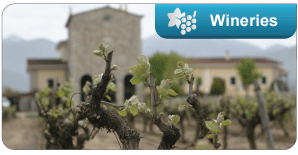Designation of origin
Τhe phenomenon of certain wines becoming well-known or even famous and much sought after because of their place of origin (designation of origin) is not an uncommon one in Greece and dates back to antiquity. It has in fact been substantiated that, in ancient times, the authenticity of those wines was safeguarded through a variety of means; archeological finds and historical as well as archival sources corroborate this fact.
Ariousios oenos from Chios; Thasios from Thassos; Maronios or Maronitis from Ismaros and Pramnios from Ikaria are but a few of the sought-after wines of antiquity which bore a designation of origin, as ancient texts confirm. At the same time, inscriptions, seals, and other archeological finds such as sealed amphorae from Rhodes found scattered around the Mediterranean basin, also confirm that the ancient Greeks (as well as others) wanted to make certain that the wines they procured were authentic.
The concept of terroir may well be one expressing authenticity. However, at the same time, it also expresses a wine’s typicality: In other words, it expresses the sum of determinants which are necessary for wines bearing a designation of origin and which are recognizable and repeated from year to year.
The association of wines with their place of provenance (designation of origin) continued in later times as well, with Malvasias oenos being the most prominent example among them during medieval times. The view eventually prevailed throughout Europe that the place of origin of wines is a significant criterion of their authenticity, genuineness and quality. This view is meritorious indeed, since all are now aware that the factors which shape the concept of terroir, a concept of paramount importance to wine, revolve around origin. The factors shaping the concept of terroir are:
• Topography (altitude; orientation and exposure to sunlight; ground inclination, etc) and the soil’s chemical composition.
• The area’s macro- and meso-climate and its development from year to year.
• The grape varieties cultivated.
• The winegrowing and winemaking tradition of the area and the corresponding cultivation and vinification practices applied.
• The people themselves who maintain and develop the area’s winegrowing tradition.


